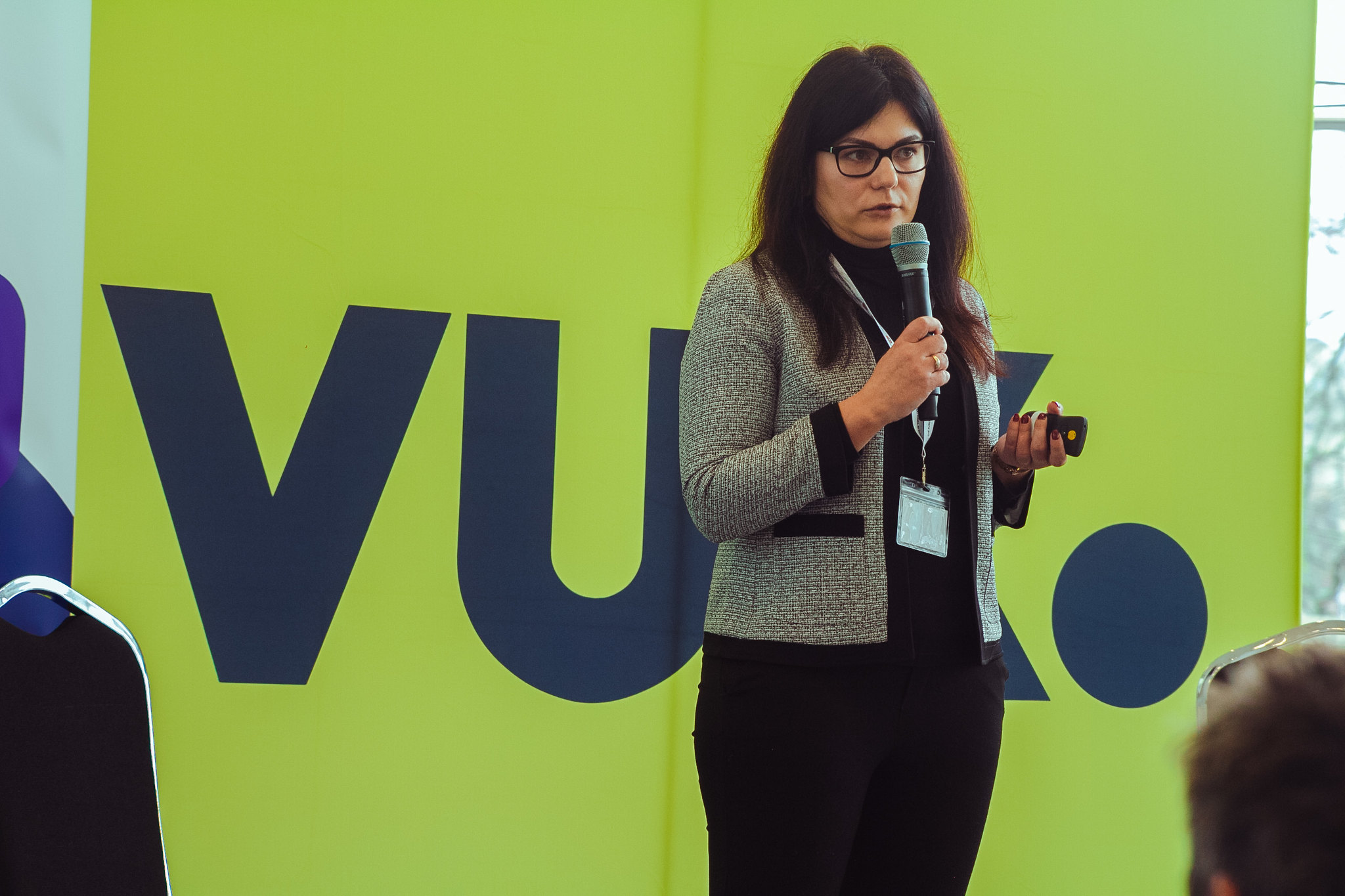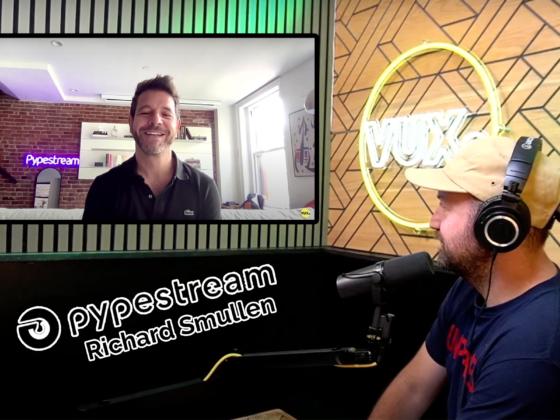
Decathlon is a global sports retailer with over 1600 stores in more than 60 countries. As you may expect, they communicate with a lot of customers every day for all sorts of reasons – for example, some want advice about products, some want to track orders, and occasionally, there will be issues to resolve too.
Previously, Decathlon had a traditional contact centre, with phone and email channels. In 2018, it introduced live chat without AI capabilities. It recognised the need for automation to improve efficiency, and planned a three-year strategy to automate the majority of customer contacts, believing live chat could be more efficient than phone or email.
 Oksana Dambrauskaite, E-commerce Operations Leader at Decathlon UK, gave a talk on the VUX World stage at the European Chatbot & Conversational AI Summit where she explained how Decathlon’s implementation of conversational AI technology has allowed it to advance its contact centre strategy, three years ahead of schedule.
Oksana Dambrauskaite, E-commerce Operations Leader at Decathlon UK, gave a talk on the VUX World stage at the European Chatbot & Conversational AI Summit where she explained how Decathlon’s implementation of conversational AI technology has allowed it to advance its contact centre strategy, three years ahead of schedule.
Needs changed overnight
It was actually the global lockdowns that motivated Decathlon to embrace AI.
When the COVID-19 pandemic hit in 2020, Decathlon was forced to close its physical stores and focus solely on online customer service.
This led to an overwhelming increase in customer contacts, but it wasn’t just a case of increased volume. The customer’s needs changed too. Their inquiries shifted from store-related questions to product-related inquiries.
As Oksana explained, “the queries we started receiving were completely different from what we received before. People who were [previously] contacting stores to ask about which bike should they buy, suddenly started contacting our live agents, who knew nothing about how to choose the size of a bike. Or [they asked] ‘will this treadmill fit in my house, I have this much space’. And all of these kinds of questions. So this led us to actually changing the way that we work.”
They unplugged the phones and connected AI
To address this, Decathlon made some bold moves. They didn’t implement conversational AI into their contact centre and slowly have it take over some of the conversations from their live agents. They closed the contact centre entirely, and focused on digital channels instead. They implemented WhatsApp, Google Business Messaging, and Messenger.
Oksana had to explain this huge transition to the team, and her rationale was that it would improve customer experience; “if a customer calls and stays on hold for one hour, it doesn’t really help us, right? It’s a very bad customer service experience. Instead, if we have other channels, we put in more channels, we automate them, and we provide a good response, then customers will be happier, and it’s going to be better for us.”
They tested this approach, found it worked for them, and have never reopened the contact centre since.

Oksana Dambrauskaite on the stage of VUX @ The European Chatbot and Conversational Summit 2023 in Edinburgh
AI joined the team, and the humans did better work
You can’t just have conversational AI replace the contact centre without a deep understanding of your customer’s needs. Those learnings can be found in the transcripts of calls between customers and live agents. Decathlon analysed customer conversations to identify frequently asked questions that could be automated.
They continue to analyse the conversations to find improvements, as well as looking for ways to connect with and utilise their data, and seek other improvements through automations.
You may be under the impression that Decathlon replaced all their customer support staff with conversational AI, but that’s not the truth. They know that some customers are better served by humans than AI, as Oksana says, “if I’m going to buy a table tennis table for 1000 pounds, I don’t want to chat to a bot. I want to chat to a person, and [Decathlon] wants to chat to that person to give them extra support.” They used AI to serve the non-value-adding tasks such as order tracking and store opening hours, while their human team took the complex or higher-value calls.
Plus, as Oksana said during the VUX World Ethics Panel, hosted on the same stage later that day, nobody from their team was fired when they implemented AI.
Wins
It was a bold strategy but it seems to have paid off. 50% of all customer contacts are now fully automated, while agent productivity has increased by 25%, and customer satisfaction has improved by 10 points.
While the rate of change may scare many (and it’s incredible that Oksana’s team managed to convince stakeholders to close their contact centre when COVID had already forced them to close their stores), this just goes to show that with the right strategy and execution, AI can improve customer experience to a high degree.
From here, Oksana’s team plans to transform customer service from a cost centre to a profit centre, and deliver consistent omni-channel experiences, and leverage online channels to enhance the in-store shopping experience.
You can watch the full video of Oksana’s talk, and here’s Decathlon’s Charles Guth’s appearance on the VUX World podcast where he gives more insights into their transition to conversational AI.




